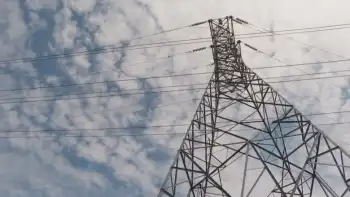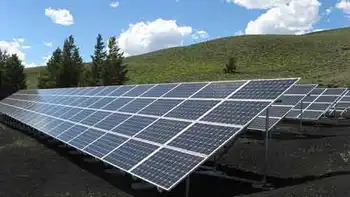Renewable energies to leap, costs fall
The most comprehensive UN overview of the sector to date said renewables excluding bioenergy, which is mainly firewood burned in developing nations for cooking and heating, could expand by three to 20 times by mid-century.
"The cost of most renewable energy technologies has declined, and significant additional technical advancements are expected," the Intergovernmental Panel on Climate Change IPCC said in a draft obtained by Reuters, based on a review of 164 scenarios.
"Further cost reductions are expected, resulting in greater potential for climate change mitigation and reducing the need for policy measures to ensure rapid deployment," it said. The IPCC is meeting in Abu Dhabi this month.
It said most scenarios pointed to a "substantial increase in the deployment of renewable energy by 2030, 2050 and beyond."
In 2008 renewable energy production accounted for about 12.9 percent of global primary energy supply and was dominated by bioenergy with 10.2 percent, followed by hydropower, wind, geothermal, solar power and ocean energy.
The projected expansion is likely to continue even without new measures to promote a shift from fossil fuels as part of a UN-led fight against climate change, it said.
UN talks on a new deal to combat global warming have made little progress. A summit in Copenhagen in 2009 failed to agree on a binding treaty to combat global warming, which IPCC blames mainly on emissions from burning fossil fuels.
Costs of renewables have been a hurdle. "The levelized cost of energy for many renewable energy technologies is currently higher than market energy prices, though in other cases renewable energy is already economically competitive," the report said.
The draft, written before Japan's nuclear disaster in March, also said renewables by 2010 would probably account for a bigger share of low-carbon energies than nuclear power and fossil fuels from which greenhouse gases are captured and buried.
The 30-page summary for policymakers, part of a Special Report on Renewable Energy Sources, will be published on May 9.
The summary is due to guide governments, investors and companies, including wind firms such as Denmark's Vestas and Suzlon and solar firms such as First Solar or Suntech Power Holdings.
Most of the 164 scenarios showed renewable energies would rise to supply above 100 exajoules EJ a year by 2050, reaching 200-400 EJ a year in many scenarios. That is up from 64 EJ in 2008, when world supply was 492 EJ, it said.
The exajoule, or 10 to the 18th power joules, is a typical measure of global energy use.
"An increase of production of renewable energies excluding traditional bioenergy anywhere from roughly three-fold to 20-fold is necessary," the report said of the 2050 outlook.
Renewables' share of total energy supply varied widely in the scenarios, reaching up to 77 percent of total energy supply by 2050.
It also said the technical potential of renewable energies — especially solar — was substantially higher even than projected world energy demand.
Deployment of renewables has leapt in recent years. About 140 gigawatts of added electricity generating capacity came from renewables in 2008-09 of a world total of 300 GW, it said.
The review of 164 scenarios showed that renewable energies could lead to cumulative carbon dioxide savings of 220-560 billion tonnes from 2010 to 2050. That compares with 1.53 trillion tonnes of cumulative fossil and industrial carbon dioxide emissions in a reference scenario for the same years.
Global renewables investments, in four illustrative scenarios, were forecast at $1.36-$5.1 trillion for the decade to 2020 and $1.49-$7.18 trillion from 2012-30. Real costs would be lower, due to factors including savings on other energies.
Related News

N.L. lags behind Canada in energy efficiency, but there's a silver lining to the stats
ST. JOHNS - Ah, another day, another depressing study that places Newfoundland and Labrador as lagging behind the rest of Canada.
We've been in this place before — least-fit kids, lowest birthrate — and now we can add a new dubious distinction to the pile: a ranking of the provinces according to energy efficiency placed Newfoundland and Labrador last.
Efficiency Canada released its first-ever provincial scorecard Nov. 20, comparing energy efficiency policies among the provinces. With energy efficiency a key part of reducing greenhouse gas emissions, Newfoundland and Labrador sat in 10th place, noted for its lack of policies on everything from…





